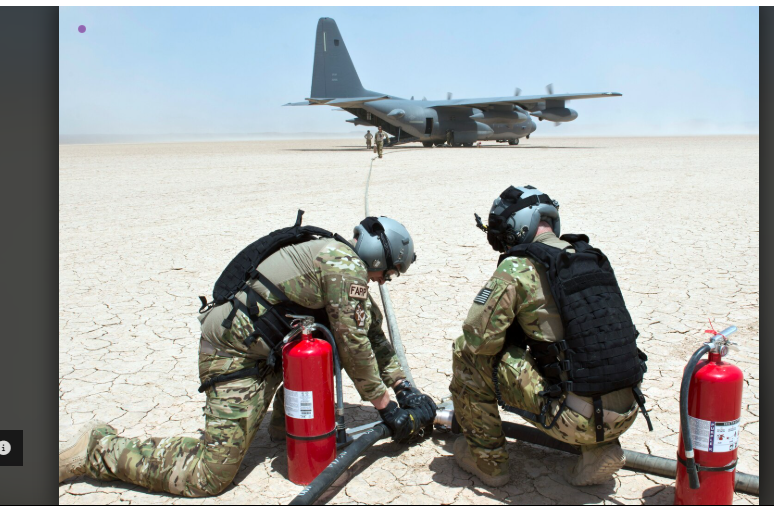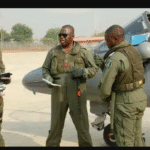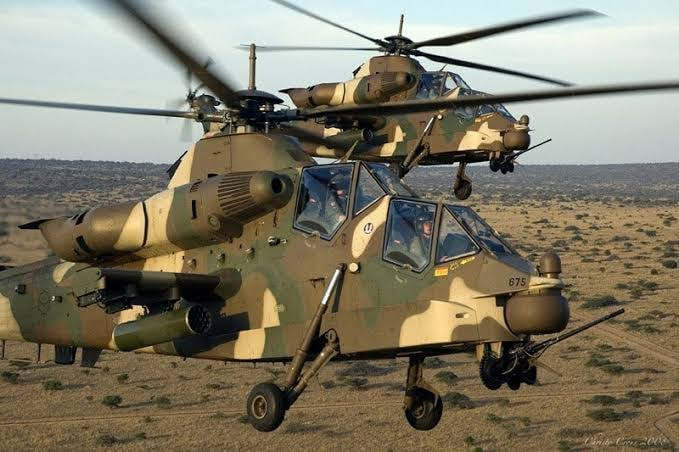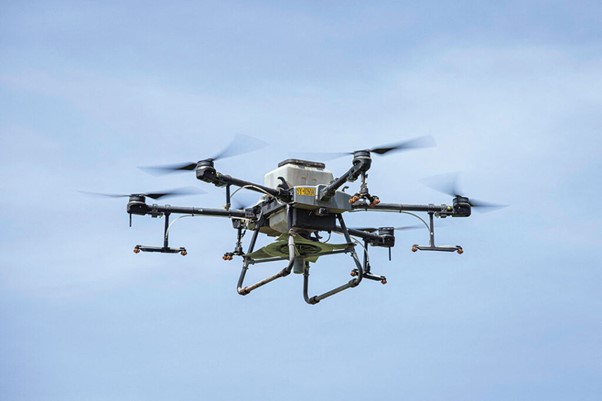African Aerospace Industry: From Import Dependency to Homegrown Ambition

Africa’s aerospace capabilities in the last few decades have been defined largely by import dependency—reliance on foreign aircraft, spare parts, and technical expertise to sustain air operations. From military transport planes sourced in Europe to helicopters procured from Russia and training aircraft delivered by China, the continent’s skies have long been dominated by non-African manufacturers. But a quiet shift is underway. Across the continent, governments, private investors, and defence innovators are pushing to build a homegrown aerospace industry—one capable of designing, assembling, maintaining, and eventually exporting aircraft and related technologies.
Africa’s dependency on foreign aerospace solutions is rooted in the post-independence era of the 1960s and 1970s, when newly sovereign states sought to quickly build air forces and commercial fleets. With no industrial base or technical expertise to produce indigenous aircraft, leaders turned to Cold War powers for supply. The United States, the Soviet Union, France, and the United Kingdom became primary sources of both platforms and training.
This procurement model delivered capability but at a high cost: long-term maintenance contracts, foreign currency outflows, and vulnerability to political restrictions on spare parts or upgrades. Sanctions, such as those imposed on Zimbabwe in the early 2000s, showed how reliance on external suppliers could ground fleets overnight.
South Africa’s Head Start
South Africa remains the most advanced aerospace nation on the continent, thanks in large part to its apartheid-era push for self-reliance under sanctions. Companies like Denel Aeronautics (formerly Atlas Aircraft Corporation) developed the Rooivalk attack helicopter and the Cheetah fighter (a Mirage III upgrade). Today, Denel produces airframes, components, and unmanned aerial systems (UAS), and it participates in global supply chains through partnerships with Airbus, Boeing, and Saab.
The South African aerospace cluster, centred in Gauteng, also includes private firms producing avionics, composite materials, and maintenance, repair, and overhaul (MRO) services. However, funding constraints and fluctuating defence budgets have slowed new platform development, underscoring the challenge of sustaining high-end aerospace engineering without consistent investment.
Nigeria’s Expanding Ambitions
Nigeria has been steadily building aerospace capacity through institutions like the Nigerian College of Aviation Technology (NCAT) in Zaria and the Nigerian Air Force’s 431 Engineering Group. The country has focused on developing indigenous unmanned aerial vehicles such as the “Tsaigumi” ISR drone, intended for both military surveillance and disaster response.
In the commercial sector, Nigeria’s plan for a national MRO facility at Akwa Ibom’s Victor Attah International Airport could make it a hub for West African aircraft maintenance, reducing reliance on Europe or the Middle East. This is critical given the high costs African airlines incur ferrying aircraft overseas for heavy checks.
North African Manufacturing and Integration
North African countries, particularly Egypt and Morocco, have leveraged partnerships with global aerospace giants to build manufacturing capacity. Egypt’s Arab Organisation for Industrialisation (AOI) assembles aircraft under licence, including the K-8E trainer in collaboration with China. Morocco has positioned itself as a major supplier of aerostructures for Boeing and Airbus, producing fuselage sections, wing parts, and other components for export.
Tunisia has also joined the aerospace supply chain, focusing on precision engineering and components for European markets. While these efforts are largely export-oriented, they have the potential to feed into indigenous military and civil aviation projects.
Emerging Players and Niche Innovations
Several other African nations are exploring niche aerospace markets:
- Ethiopia is capitalising on the global reputation of Ethiopian Airlines to develop aviation training and MRO capabilities in Addis Ababa.
- Kenya has invested in unmanned aerial systems for wildlife protection and border surveillance.
- Ghana has partnered with foreign firms to explore light aircraft assembly for training and short-haul passenger flights.
The focus on niche capabilities allows smaller economies to participate without the massive capital outlay required for full-scale aircraft manufacturing.
Maintenance, Repair, and Overhaul: The Gateway to Self-Sufficiency
While building aircraft from scratch remains capital-intensive, expanding MRO capacity is a more achievable path toward self-reliance. Facilities in Ethiopia, South Africa, Egypt, and Nigeria already service regional fleets, but demand far outstrips supply. African airlines collectively spend over $1 billion annually on overseas MRO services—a financial drain that could be reduced through coordinated continental investment.
For the military, domestic MRO capabilities are essential for operational readiness. Countries like Algeria and Angola have developed in-house maintenance for their Russian-built aircraft, mitigating the impact of international supply chain disruptions.
The Role of Technology Transfer and Partnerships
Technology transfer agreements remain central to Africa’s aerospace ambitions. Partnerships with established aerospace powers allow local engineers to gain experience, while offset agreements tied to procurement can mandate local assembly or component production. For example, when Airbus sold military transport aircraft to South Africa, it incorporated local manufacturing into the deal, ensuring skills and technology stayed in-country.
However, technology transfer is only effective when matched with long-term skills retention. Without sustained training programmes and incentives, African engineers risk being drawn abroad by better pay and opportunities—a persistent challenge for the sector.
Challenges to Overcome
The road from import dependency to homegrown production is steep. The key obstacles include:
- Capital Intensity: Aerospace manufacturing demands multi-billion-dollar investments in facilities, testing equipment, and research.
- Skilled Workforce Gaps: Limited numbers of aeronautical engineers and technicians restrict the speed of industrial growth.
- Fragmented Markets: With 54 states operating separate procurement policies, economies of scale are difficult to achieve.
- Political Instability: Conflict and governance challenges can deter foreign investment and disrupt local operations.
A Case for Continental Cooperation
Continental aerospace integration could accelerate progress. An African Aerospace Consortium—pooling resources from several states—could focus on jointly developing aircraft for peacekeeping, regional transport, and disaster relief. Such a model has been discussed in AU forums but has yet to move beyond conceptual stages.
In the meantime, regional blocs can coordinate procurement to support local industries. If ECOWAS or SADC committed to buying a percentage of their air fleet from African assemblers, the scale would make production more viable.
The African aerospace industry stands at a crossroads. Continued dependence on foreign suppliers will keep African states vulnerable to external political and economic pressures. Yet the shift towards homegrown ambition is unmistakable, from Nigerian drones to Moroccan aerostructures and South African helicopters.
The next decade will test whether these scattered efforts can coalesce into a coherent continental strategy—one that prioritises indigenous design, builds resilient MRO hubs, and nurtures the engineers and pilots who will carry African aerospace into the future.
If successful, Africa could move from being a buyer of aerospace technology to a producer, not only securing its own skies but contributing to global supply chains on its own terms.
King Richard Igimoh, Group Editor ALO
King Richard Igimoh, Group Editor African Leadership Organisation is an award-winning journalist, editor, and publisher with over two decades of expertise in political, defence, and international affairs reporting. As Group Editor of the African Leadership Organisation—publishers of African Leadership Magazine, African Defence & Security Magazine, and Africa Projects Magazine—he delivers incisive coverage that amplifies Africa’s voice in global security, policy, and leadership discourse. He provides frontline editorial coverage of high-profile international events, including the ALM Persons of the Year, the African Summit, and the African Business and Leadership Awards (ABLA) in London, as well as the International Forum for African and Caribbean Leadership (IFAL) in New York City during the United Nations General Assembly.
Recent Posts
Categories
- Air & Aerospace15
- Border Security14
- Civil Security3
- Civil Wars4
- Crisis4
- Cyber Security4
- Defense15
- Diplomacy17
- Entrepreneurship1
- Events5
- Global Security Watch6
- Industry6
- Land & Army7
- Leadership & Training3
- Military Aviation2
- Military History27
- Military Speeches1
- Naval & Maritime8
- Resources1
- Security12
- Special Forces1
- Systems And Technology8
- Tech6
- Uncategorized3
- UNSC1
- Veterans6
- Women in Defence9
Related Articles
AFRICAN AIR FORCES RISE TO THE FOREFRONT IN COUNTERTERRORISM OPERATIONS
Across the vast and volatile regions of Africa, air forces once limited...
ByKing Richard Igimoh, Group Editor ALONovember 21, 2025THE SPACE RACE: AFRICA’S EMERGING AEROSPACE PROGRAMMES
Africa’s skies are no longer just a backdrop to other powers’ ambitions...
ByKing Richard Igimoh, Group Editor ALOOctober 6, 2025MILITARY HELICOPTERS IN AFRICAN OPERATIONS
Military helicopters have become important assets in African operations, offering unmatched versatility...
ByKing Richard Igimoh, Group Editor ALOSeptember 23, 2025UNMANNED AERIAL SYSTEMS: GAME CHANGERS IN AFRICAN CONFLICTS
In Africa’s conflict zones where rugged terrain once served as cover for ...
ByKing Richard Igimoh, Group Editor ALOSeptember 15, 2025













